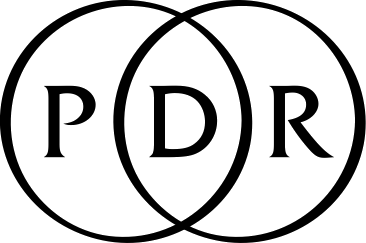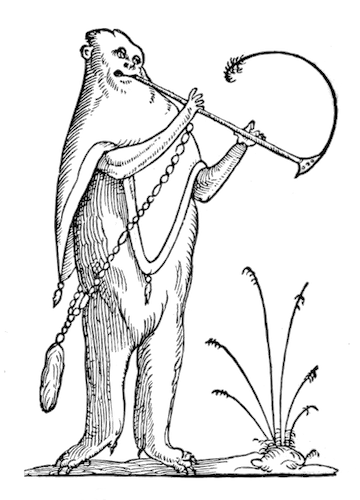
EssaysScience & Medicine

The Anthropometric Detective and His Racial Clues
Ava Kofman explores how the spectre of race, in particular Francis Galton's disturbing theory of eugenics, haunts the early history of fingerprint technology. more

At the end of the 19th century, inspired by radical advances in technology, physicists asserted the reality of invisible worlds — an idea through which they sought to address not only psychic phenomena such as telepathy, but also spiritual questions around the soul and immortality. Philip Ball explores this fascinating history, and how in this turn to the unseen in the face of mystery there exists a parallel to quantum physics today. more

The Science of Life and Death in Mary Shelley’s Frankenstein
Professor Sharon Ruston surveys the scientific background to Mary Shelley's Frankenstein, considering contemporary investigations into resuscitation, galvanism, and the possibility of states between life and death. more

Hyperspace, ghosts, and colourful cubes — Jon Crabb on the work of Charles Howard Hinton and the cultural history of higher dimensions. more

Richard Spruce and the Trials of Victorian Bryology
Obsessed with the smallest and seemingly least exciting of plants — mosses and liverworts — the 19th-century botanist Richard Spruce never achieved the fame of his more popularist contemporaries. Elaine Ayers explores the work of this unsung hero of Victorian plant science and how his complexities echoed the very subject of his study. more

Deadly fogs, moralistic diatribes, debunked medical theory — Brett Beasley explores a piece of Victorian science fiction considered to be the first modern tale of urban apocalypse. more

Dr Mitchill and the Mathematical Tetrodon
One of the early Republic's great polymaths, New Yorker Samuel L. Mitchill was a man with a finger in many a pie, including medicine, science, natural history, and politics. Dr Kevin Dann argues that Mitchill's peculiar brand of curiosity can best be seen in his study of fish and the attention he gives one seemingly unassuming specimen. more

When the Birds and the Bees Were Not Enough: Aristotle’s Masterpiece
Mary Fissell on how a wildly popular sex manual — first published in 17th-century London and reprinted in hundreds of subsequent editions — both taught and titillated through the early modern period and beyond. more

Cat Pianos, Sound-Houses, and Other Imaginary Musical Instruments
Deirdre Loughridge and Thomas Patteson, curators of the Museum of Imaginary Musical Instruments, explore the wonderful history of made-up musical contraptions, including a piano comprised of yelping cats and Francis Bacon's 17th-century vision of experimental sound manipulation. more

Scurvy and the Terra Incognita
One remarkable symptom of scurvy, that constant bane of the Age of Discovery, was the acute and morbid heightening of the senses. Jonathan Lamb explores how this unusual effect of sailing into uncharted territory echoed a different kind of voyage, one undertaken by the Empiricists through their experiments in enhancing the senses artificially. more

Should we consider black a colour, the absence of colour, or a suspension of vision produced by a deprivation of light? Beginning with Robert Fludd's attempt to picture nothingness, Eugene Thacker reflects* on some of the ways in which blackness has been used and thought about through the history of art and philosophical thought. more

Sex and Science in Robert Thornton’s Temple of Flora
Bridal beds, blushing captives, and swollen trunks - Carl Linnaeus' taxonomy of plants heralded a whole new era in 18th-century Europe of plants being spoken of in sexualised terms. Martin Kemp explores* how this association between the floral and erotic reached its visual zenith in Robert Thornton's exquisitely illustrated Temple of Flora. more

Neanderthals in 3D: L’Homme de La Chapelle
More than just a favourite of Victorian home entertainment, the stereoscope and the 3D images it created were also used in the field of science. Lydia Pyne explores how the French palaeontologist Marcellin Boule utilised the device in his groundbreaking monograph analysing one of the early-20th-century's most significant archaeological discoveries - the Neanderthal skeleton of La Chapelle. more

When Chocolate was Medicine: Colmenero, Wadsworth, and Dufour
Chocolate has not always been the common confectionary we experience today. When it first arrived from the Americas into Europe in the 17th century it was a rare and mysterious substance, thought more of as a drug than as a food. Christine Jones traces the history and literature of its reception. more

Julia Pastrana: A “Monster to the Whole World”
Julia Pastrana, a woman from Mexico born with hypertrichosis, became one of the most famous human curiosities of the 19th century, exhibited the world over as a "bearded lady" while both alive and dead. Bess Lovejoy explores her story and how it was only in 2013, 153 years after her passing, that she was finally laid to rest. more

Illustrations of Madness: James Tilly Matthews and the Air Loom
Mike Jay recounts the tragic story of James Tilly Matthews, a former peace activist of the Napoleonic Wars who was confined to London's notorious Bedlam asylum in 1797 for believing that his mind was under the control of the “Air Loom” — a terrifying machine whose mesmeric rays and mysterious gases were brainwashing politicians and plunging Europe into revolution, terror, and war. more

Redressing the Balance: Levinus Vincent’s Wonder Theatre of Nature
Bert van de Roemer explores the curiosity cabinet of the Dutch collector Levinus Vincent and how the aesthetic drive behind his meticulous ordering of the contents was in essence religious, an attempt to emphasise the wonder of God's creations by restoring the natural world to its prelapsarian harmony. more

“O, Excellent Air Bag”: Humphry Davy and Nitrous Oxide
The summer of 1799 saw a new fad take hold in one remarkable circle of British society: the inhalation of "Laughing Gas". The overseer and pioneer of these experiments was a young Humphry Davy, future President of the Royal Society. Mike Jay explores how Davy's extreme and near-fatal regime of self-experimentation with the gas not only marked a new era in the history of science but a turn toward the philosophical and literary romanticism of the century to come. more

The Naturalist and the Neurologist: On Charles Darwin and James Crichton-Browne
Stassa Edwards explores Charles Darwin's photography collection, which includes almost forty portraits of mental patients given to him by the neurologist James Crichton-Browne. The study of these photographs, and the related correspondence between the two men, would prove instrumental in the development of The Expression of the Emotions in Man and Animals (1872), Darwin's book on the evolution of emotions. more

Frederik Ruysch: The Artist of Death
Luuc Kooijmans explores the work of Dutch anatomist Frederik Ruysch, known for his remarkable ‘still life’ displays which blurred the boundary between scientific preservation and vanitas art. more

The Founding Fathers v. The Climate Change Skeptics
When claims from Europe accused British America of being inferior on account of its colder weather, Thomas Jefferson and his fellow Founding Fathers responded with patriotic zeal that their settlement was actually causing the climate to warm. Raphael Calel explores how, in contrast to today's common association of the U.S. with climate change skepticism, it was a very different story in the 18th century. more

The terrifying Great Norway Serpent, or Sea Orm, is the most famous of the many influential sea monsters depicted and described by 16th-century ecclesiastic, cartographer, and historian Olaus Magnus. Joseph Nigg explores the iconic and literary legacy of the controversial serpent from its beginnings in the medieval imagination to modern cryptozoology. more

Writing his Life through the Other: The Anthropology of Malinowski
Last year saw the works of Bronislaw Malinowski - father of modern anthropology - enter the public domain in many countries around the world. Michael W. Young explores the personal crisis plaguing the Polish-born anthropologist at the end of his first major stint of ethnographic immersion in the Trobriand Islands, a period of self-doubt glimpsed through entries in his diary - the most infamous, most nakedly honest document in the annals of social anthropology. more

Proving it: The American Provers’ Union Documents Certain Ill Effects
What would induce physicians to ingest mercury to the point of vomiting and to painstakingly note down the effects of imbibing large amounts of cannabis tincture? Alicia Puglionesi explores the history of "proving", the practice of auto-experimentation which forms the cornerstone of homeopathic medicine. more

